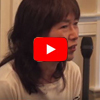Bringing Hope to the Table through Sustainability
Blog / Produced by The High Calling
Is the call to sustainability one we all must respond to? And is there something unique about the call of sustainability for Christians? Charity Singleton Craig tackles these questions and more in our theme Sustainable Work.
It’s Monday morning, and I can barely move. When I reach over to turn off the alarm, pain runs from my shoulder, down my back, through to my knees. Why am I so sore? I think, scheming to hit the snooze button again. Then I remember the dandelions and the piles of weeds and bush trimmings.
My Sunday afternoon had been spent crawling on my knees, leaning into the flower beds, crouching along the edge of the sidewalk, pulling, snipping, cutting, twisting. Each time I grabbed a handful of ground cover that was growing out of control or stuck my forked tool into the ground and pried out a dandelion from the root, I thought of all the people over the years who have told me, “You can just spray those.” And I could. I could make a couple of passes in the spring with a nozzled hose connected to a gallon jug or a wheeled spreader filled with tiny pellets and just take care of the weeds for the year. Or I could do the hard work, feeling the ground under my knees and the sweat dripping down my back and each weed being pulled to its death with my own hand. And I could feel good about my pets walking around in the backyard and the neighbor kids wandering into my front lawn and nobody needing to stoop to read the warning signs that my yard is hazardous to their health.
It’s a small thing, going hand to head with the dandelions in my lawn, just like it’s a small thing to throw my grass clippings in the compost bin and rinse out my soup cans for the recycling barrel. For every bag we set out for the recycling route on Wednesdays, we set out three bags for the garbage route on Thursdays. I drink tap water, remind the boys to turn out the lights, and shop at farmers’ markets when I can. But I also buy food out of season that had to be shipped thousands of miles to my supermarket and factory-raised meat because it’s much cheaper to feed three growing boys that way. And if the sustainability of our lives depends on our water use habits, we aren’t going to make it. I doubt we would survive a month under California’s drought restrictions.
Small Things Add Up
But maybe what we are doing adds up to more than we realize. Maybe it’s at least a start? Recently, I met Kevin Crosby online through his work as a sustainability manager for Xanterra Parks & Resorts. He is responsible for energy efficiency initiatives, recycling, environmental stewardship training, and many other areas contributing to Xanterra’s commitment to protect the environment at Mount Rushmore and Rocky Mountain National Park. In his work there, Crosby helps Xanterra “turn off the lights,” so to speak, maintaining recycling programs at the locations he serves, supporting alternative energy programs for remote gift shops, and working with an organic garden that helps feed staff members and restaurant guests but also reuses the food scraps from Mount Rushmore facilities through a comprehensive composting project.
“In the parks, we do a lot to reduce the environmental impact of our operations and often work with the National Park Service (NPS) to help them do the same,” Crosby said. “However, we recognize that the biggest impact that we can have is not the amount of energy that we save or waste that we divert from the landfill, but the number of people that we can educate and motivate to take sustainable actions once they leave the park.”
Conserving for the Future
The very existence of national sites like Mount Rushmore highlights a key principle of sustainability: to not only take what we can get for ourselves but to ensure there will be resources available for future generations. When President Woodrow Wilson signed into law the creation of the NPS in 1916, the intent was to “conserve the scenery and the natural and historic objects and the wildlife therein and to provide for the enjoyment of the same in such manner and by such means as will leave them unimpaired for the enjoyment of future generations.”
When my family visited Mount Rushmore two summers ago, we posed for pictures in front of the Indiana stone on the Avenue of Flags, we got closer than we should have to a mountain goat grazing just below the Grand View Terrace, we bought souvenirs in the gift shop, and we also saw a little blue speck just above Teddy Roosevelt’s mustache that we couldn’t identify. Eventually, we heard the park rangers radioing back and forth about a weekend trip to the federal jail in Rapid City, and we learned that we were witnessing one of the few illegal climbing attempts that happen each year.
Climbing is prohibited on the Mount Rushmore monument for the safety of those foolhardy enough to try it. But also to preserve the sculpture for future generations. It’s the same reason why we weren’t allowed to feed the mountain goat or take home a souvenir rock from the base of the mountain. Every piece of rock chipped away by a climber’s shoe, every wildflower plucked by a beauty-seeking visitor, every wild animal that can no longer survive the harsh winters on its own because it’s been hand-fed all summer means someone else won’t experience the park like we did.
A few days later on that same trip, we spent the day in Yellowstone, the nation’s first national park established in 1872, more than four decades before the NPS itself was created. We saw things there we had never seen before—geysers, hot springs, deep canyons, vast prairies, bison, elk, bears. And we saw them in person because Americans from a different time thought enough of their great, great, great, great grandchildren to protect these great natural treasures, to sustain them.
But is this call to sustainability one we all must respond to? And is there something unique about the call of sustainability for Christians?
Active Participants in the Coming of God's Kingdom
Crosby said he first entered the field of sustainability for two reasons. “The first was my existing knowledge … that many of the greatest threats that face us today, especially in the developing world, relate to environmental degradation. ‘Healthy planet, healthy people,’” he said. “The second was a renewal of my commitment to Christ and to following his command to love my neighbors … ”
I want to tell people about the saving power of Jesus Christ, but I also, through my vocation, want to help them understand how we can restore balance to our relationship with the created world. Only God can ultimately overcome the problems of sin and evil in this world, but we can be active participants in the coming of his kingdom on earth.
The ways Crosby suggests that we participate in this redemptive work sound a lot like the ways he performs his own work at Xanterra. “Recycle. Implementing energy efficient measures in your home or office. Turn off lights when you are not using them. Print duplex. Buy products with recycled content. Buy fair trade products or products from companies that you know pay their employees a living wage and employ good environmental practices. Or better yet, don’t buy as much stuff.”
But do our small actions to conserve and preserve amount to more than tokens or trendiness? Crosby says yes, but only when we join forces with others.
“Individual actions make a difference, but unfortunately the problem with our current unsustainable, consumeristic society is that we aren’t going to turn it around by ourselves. Educate yourself and talk to your neighbors and politicians,” he said. “Sustainability requires both a changing mindset and action. Sustainability is a paradigm we can use to make decisions and guide our actions.”
Subduing and Ruling; Cultivating and Keeping
In his book Bringing It to the Table, Wendell Berry talks about sustainability as it relates to farming. “If you want to farm sustainably … then you have got to make your farming conform to the natural laws that govern the local ecosystem,” Berry writes. “Or, as J. Russell Smith put it seventy years ago, you have got to ‘fit the farming to the land’—not to the available technology or the market, as important as those considerations are, but to the land.”
I struggle to apply this paradigm to any of my pursuits toward sustainability, especially the small bit of “farming” I do in the narrow garden beds bordering my backyard. This land produces untidy abundance; I want tended fruitfulness. The land resists manmade cover, shifting and cracking patios and sidewalks and foundations, sprouting seedlings of all varieties to fill in the gaps. I want grass—and grass only—to grow in the spaces I call “yard,” and I want pristine, unweathered surfaces everywhere else. I struggle against the land, even our .2 acres on a well-kept city street. I am tempted toward the asymmetrical warfare of chemicals and machines to subdue the nascent wildness of our little plot. And it doesn’t feel asymmetrical when rain and warm temperatures and the birds and the squirrels team up with the land against me.
This warfare metaphor rings true to many when attempting to live out the mandate of subduing and ruling the earth from Genesis 1. The Creation Mandate, though, was given before the fall, before the toil and tedium of work through the curse. And another way God explained the “subdue and rule” command was “cultive it and keep it.” God made people responsible to care for the dirt we are made of and will return to. In other words, the circle of life has been entrusted to us. And the closer we come to seeing that circle played out in the everyday places of our own lives, the closer we come to fulfilling our call to subdue and rule, to cultivate and keep.
Doing Justice through Sustainability
Crosby describes the connection between faith and sustainability as more than just creation care, though.
“I think we need to start doing justice, loving our neighbors, and realize that taking care of the environment is a part of those two things,” he said.
Another sustainability project Crosby participated in at Rocky Mountain National Park last winter seems to capture the essence of both callings—caring for justice and caring for the earth. When Xanterra replaced all of the mattresses in their employee dorm in Estes Park, Colorado, rather than send them to the landfill or pay to have them recycled, they donated them to a nearby Methodist Church Camp.
“This was a simple project, but I think it is a great example of what we are trying to accomplish with sustainability,” Crosby said. “It benefitted the environment by continuing to use the mattresses rather than sending them to a landfill, it saved money for both Xanterra and the church camp, and it benefitted people by helping the church camps to continue their mission.”
In general, sustainability and caring for the earth is not for the faint-hearted. “There is a lot to be worried about,” Crosby said. “Fortunately, as Christians, we have hope: hope for personal salvation and hope for a renewed earth where shalom is restored. We can bring hope to the table.”





